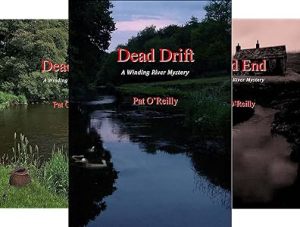Phrygania grandis, Phrygania striata - Great Red Sedge
Phylum: Arthropoda - Class: Insecta - Order: Trichoptera - Family: Phryganeidae

The Great Red Sedge is the largest caddis or sedge fly that hatches in the British Isles. These are flies of lakes and slow-flowing rivers, and they hatch on summer afternoons and evenings. In Ireland in particular the common name Murragh is used more often than Great Red Sedge.
The larva makes its case from plant material, which it fashions into a spiral tube. After pupating, the adult emerges and heads for land, where it rests among the stones and low bushes.
Fishing tip
A size 12 G&H sedge is a very effective imitation, and is best dragged across the surface just as darkness is descending.
A good place to try is beside a reed bed or other dense emergent vegetation. This tactic often brings to the surface trout that are mainly cannibal, and so a strong leader is recommended.
References
O'Reilly, Pat. (1997; 8th reprint 2010) Matching the Hatch. Shrewsbury: Quiller Publishing.
Barnard, P & Ross, E. (2007) A Guide to the adult caddisflies or sedge flies (Trichoptera). Taunton: Field Studies Council.
Wallace, I. (2006) Simple Key to Caddis Larvae. Taunton: Field Studies Council.
Wallace, I.D., Wallace, B., & Philipson, G.M. (2003) Keys to the Case-bearing Caddis Larvae of Britain and Ireland. Ambleside: Freshwater Biological Association.
Macan, T.T. (1973) A Key to the Adults of the British Trichoptera. Ambleside: Freshwater Biological Association.
Excited at the prospect of flyfishing? So are we, and we're pretty sure you would find the Winding River Mystery trilogy of action-packed thrillers gripping reading too. Dead Drift, Dead Cert, and Dead End are Pat O'Reilly's latest river-and-flyfishing based novels, and now they are available in ebook format. Full details on our website here...
Buy each book for just £4.96 on Amazon...
Please Help Us: If you have found this information interesting and useful, please consider helping to keep First Nature online by making a small donation towards the web hosting and internet costs.
Any donations over and above the essential running costs will help support the conservation work of Plantlife, the Rivers Trust and charitable botanic gardens - as do author royalties and publisher proceeds from books by Pat and Sue.
